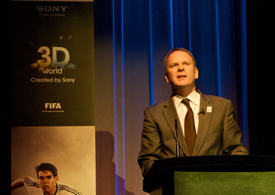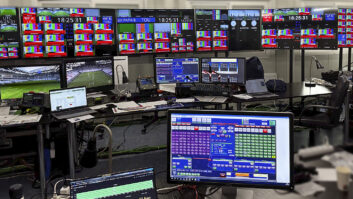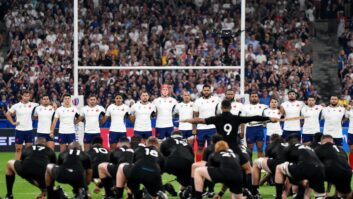
At least three broadcasters will show World Cup coverage in 3D, with 25 matches on offer from South Africa, many from the final stages, writes David Fox.
Sony and FIFA unveiled their plans in London this week, and will have two 3D OB trucks in operation at five venues (out of ten) in four cities.
The OBs, from Telegenic (UK) and AMP (France), will also supply coverage for public viewings and cinema presentations in many countries, and highlights will be viewable in about 4,000 Sony dealers worldwide. Meanwhile, up to 50 3D-equipped cinemas in the UK will showcase matches, but England fans will have to wait till at least the quarter finals before seeing their team – providing, of course, they get through.
The broadcasters signed up for 3D so far are: ESPN (USA), Sogecable (Spain) and SBS (Korea). A few more are expected to carry the 3D coverage, but most rights holders have no 3D plans. It is the first global sport event to be broadcast in 3D.
“The main issue was to have a good spread of matches in terms of match days covered,” said Niclas Ericson, FIFA’s Director of TV, plus the need to cover all the key matches, especially in the knockout stages.
Sony is currently the only company that “is able to support the entire production workflow for live production in 3D,” claimed David Bush, marketing director, Sony Professional Europe.
A key part of its technology is the new MPE-200 stereoscopic image processor, being introduced at NAB. It uses the cell processing engine familiar from Sony’s Playstation 3 (which itself is being given a 3D makeover to coincide with introduction of Sony’s 3D Bravia TVs in June). The MPE-200 works automatically, in realtime, to correct any imperfections, such as lens alignment, in the 3D feeds.
There will be at least seven 3D camera positions at each stadium, using versions of Sony’s HDC-1500 cameras on Element Technica rigs. This compares to some 32 conventional camera positions in each stadium.
Although there will be a completely different production set up from the 2D HD coverage, there will be some 2D to 3D conversions to supplement the coverage and make it more comprehensive.
JVC’s 2D to 3D system is the most likely option, as it has been in use for some time, but Sony is also developing a system, and Peter Angell, HBS’ director, production and programming division, said the ultimate choice would be between them. It is most likely to be used on Steadicam video, as all the 3D positions are fixed. “What’s better: to have slightly imperfect 3D or not to get the shot? Whatever we decide to do it has to work. Our tests show that Steadicam material looks pretty good,” he said.





